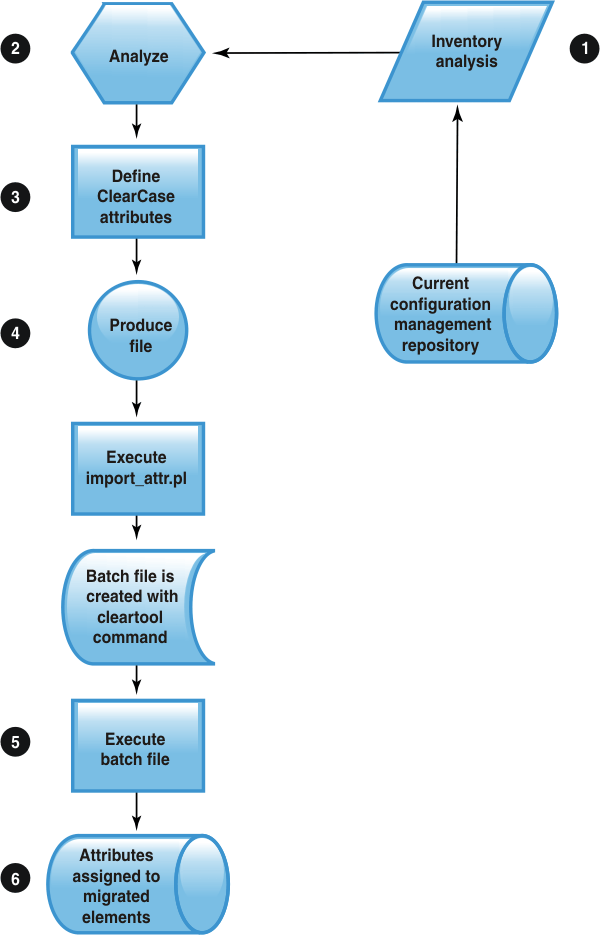Configuring the view elements
Assign type attributes to each element to identify what language the element uses and whether a precompiling process is required by the element.
Before you begin
Previous step: Configuring the build project VOB
About this task
The following figure illustrates
the process of configuring the view elements.
- Create a list of the z/OS® elements that you want to include in parameterized build processes.
- Determine the element type (such as COBOL or PL/I) for each element and the build resources that they will need (such as DB2® or CICS®).
- Determine which attributes you will need to define for each element.
- Create the tab-delimited input file, sampleAttr.txt, in which you assign attribute values to each element.
- Execute the script import_attr.pl using sampleAttr.txt as input. This script creates two output batch files: testout1.cmd and testout.cmd. Execute testout1.cmd to define the element attributes.
- Execute testout.cmd to assign values to the attributes for each element.

Procedure
To configure the view elements, do these steps:
What to do next
Next step: Customizing the build scripts